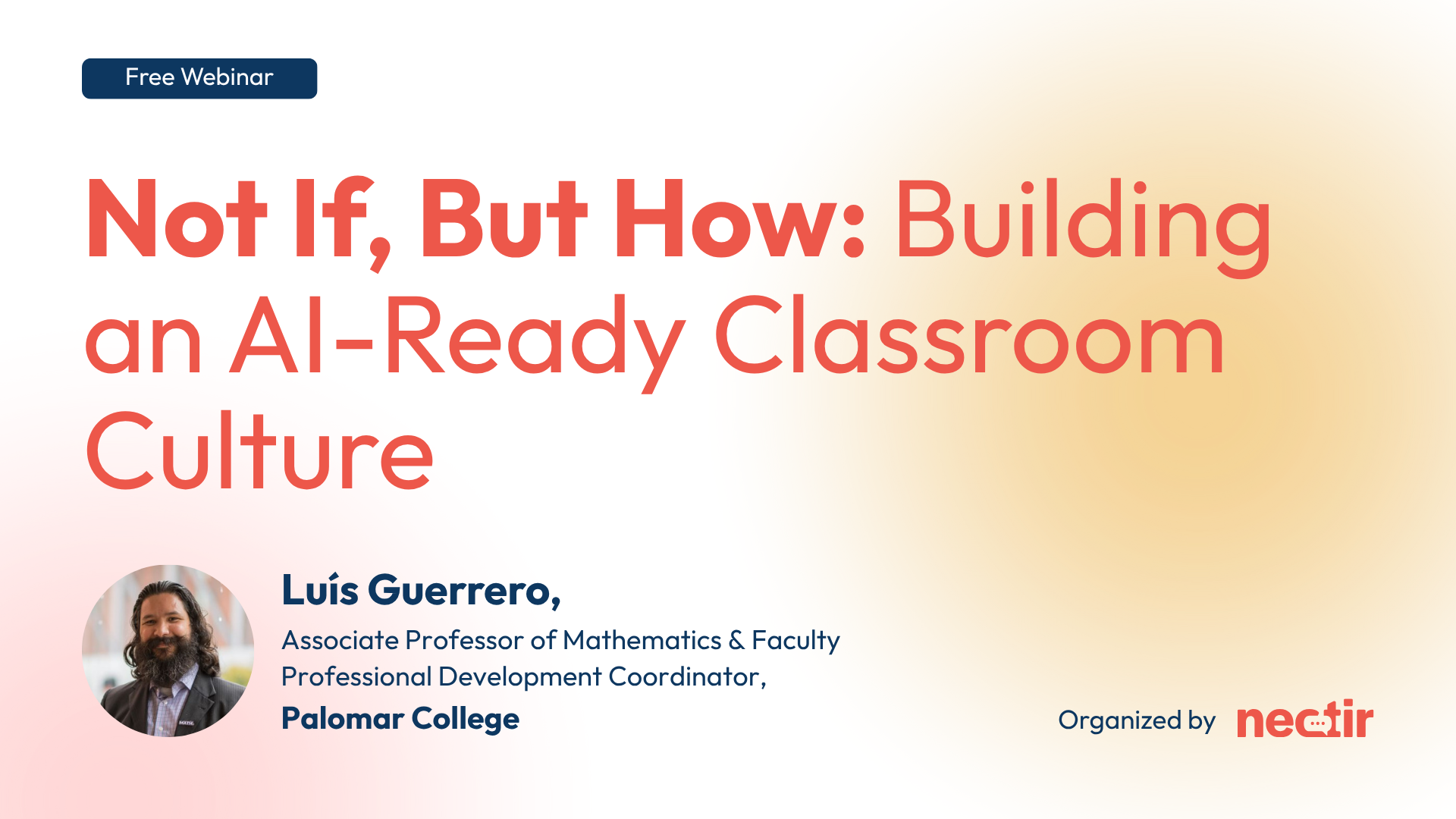Webinar Recap: Building an AI-Ready Classroom Culture

The question for academic leaders is not if, but how to build an AI-ready classroom culture that truly prepares students for success in the workforce.
To address this challenge, Nectir hosted a public webinar featuring Luís Guerrero, Associate Professor of Mathematics and Faculty Professional Development Coordinator at Palomar College.
The session covered proven, practical ways to integrate AI as a foundational element in student learning and retention.
The AI Landscape: Urgency, Not Just Opportunity

According to Professor Guerrero, the era of waiting to see if AI matters is over. “What I'm gonna do is...showcase the use of AI in many different places,” he explained, noting how medical schools and large public university systems are embedding AI across the curriculum and in workforce preparation.
He also made it clear that any tech adoption in education must prioritize equity and maintain a human-centered approach. He shared details from statewide efforts:
“They want to explore the transformative potential of AI in education, aiming to leverage the technology to reduce equity gaps while maintaining the inherent bias in that digital access.”

Faculty fears about AI adoption remain valid and common, including job displacement, loss of academic control, and the challenge of keeping pace with policy, especially at the community college level. Legislative guardrails are being established, and human teachers remain essential.
Rethinking Pedagogy for the AI Era

Guerrero didn’t just talk about AI as an abstract force, but he drilled down into the need to rethink pedagogy itself. For example, he questioned the longstanding hierarchy of Bloom’s Taxonomy.
“It seems that many people are now literally flipping Bloom's taxonomy in the age of AI...the first thing that students encounter in your classroom is actually Create.”
In other words, instead of relegating creative work to only advanced students, instructors should lead with it, using AI to scaffold and accelerate learning, even in domains like mathematics.
However, Professor Guerrero also acknowledged expected faculty resistance, saying, “I know some of you have the fear that at the instant that you allow the use of AI in your classroom, students are going to turn off their [brains], there will be no critical thinking, no problem solving...we need to be very careful about that.” His approach? Don’t ignore the risks, but experiment and measure, because student engagement and retention are already changing.
Real Classroom Impact with Nectir AI

Instead of theoretical use cases, Guerrero shared actual assignments, demos, and outcomes from his own math courses, where he’s used Nectir AI for three semesters. Examples included:
- Math problems tailored for visual learners, even using emojis to “make the concept click.”
- End-of-unit AI reflections that prompted students to connect advanced math concepts to their majors and interests.
- Scaffolded prompt-writing assignments, where students learned how to interact with AI and apply it to their real world, from American Sign Language to engineering.
Professor Guerrero wasn’t claiming instant, universal transformation. His change in approach resulted in what he called “raising the floor,” meaning more students persisted, fewer drop-offs, and greater confidence among those who typically struggled.
“Students are persistent more, and therefore my [Drops, Fails, and Withdraws] are lessened by this, because they fill more of the holes that they couldn't address in a traditional manner.”
As a final test of credibility, he addressed accuracy and hallucinations head-on, saying, "There's a new mantra out there, prompt, but verify...in the presence of some hallucination, especially for the students, I can take it to be a learning opportunity and say, hey, bring the work. We can figure it out together.”
Not If, But How
If there's one thing clear after this session, it's that AI adoption in higher ed is no longer a luxury or speculative exercise. It's here now, and the challenge is building systems, strategy, and culture that put measurable educational outcomes first. Professor Guerrero’s evidence was real, actionable, and transparent about both the wins and the work left to do.
Want to learn more about Professor Guerrero’s AI implementation or see if Nectir AI is a good fit for your classroom?
Listen to the recorded session on YouTube.
Book a personalized demo with the Nectir team.

